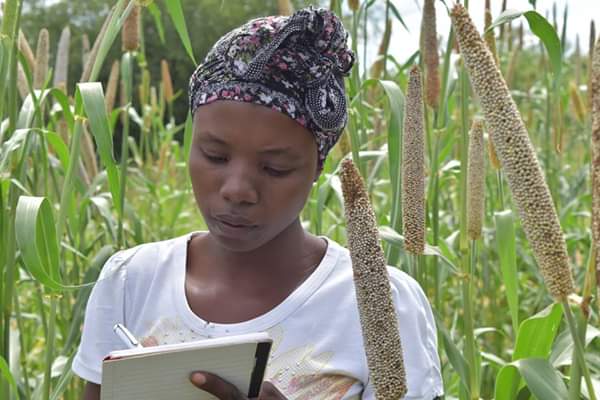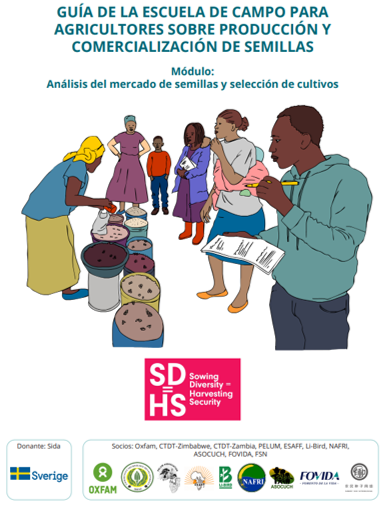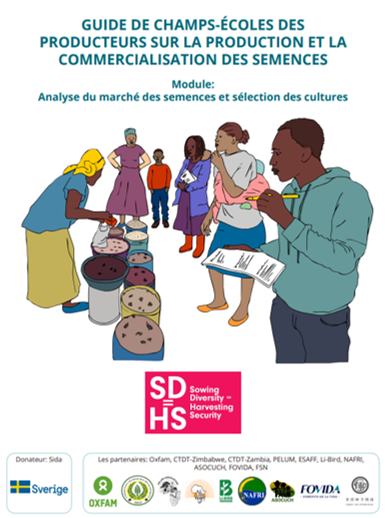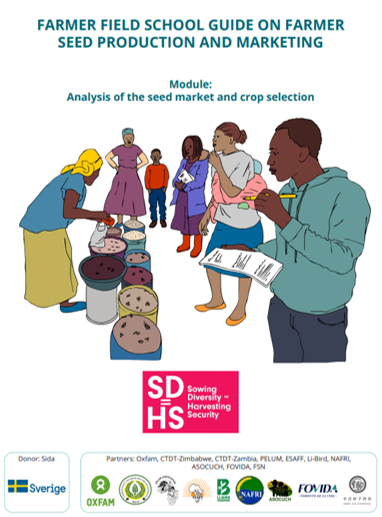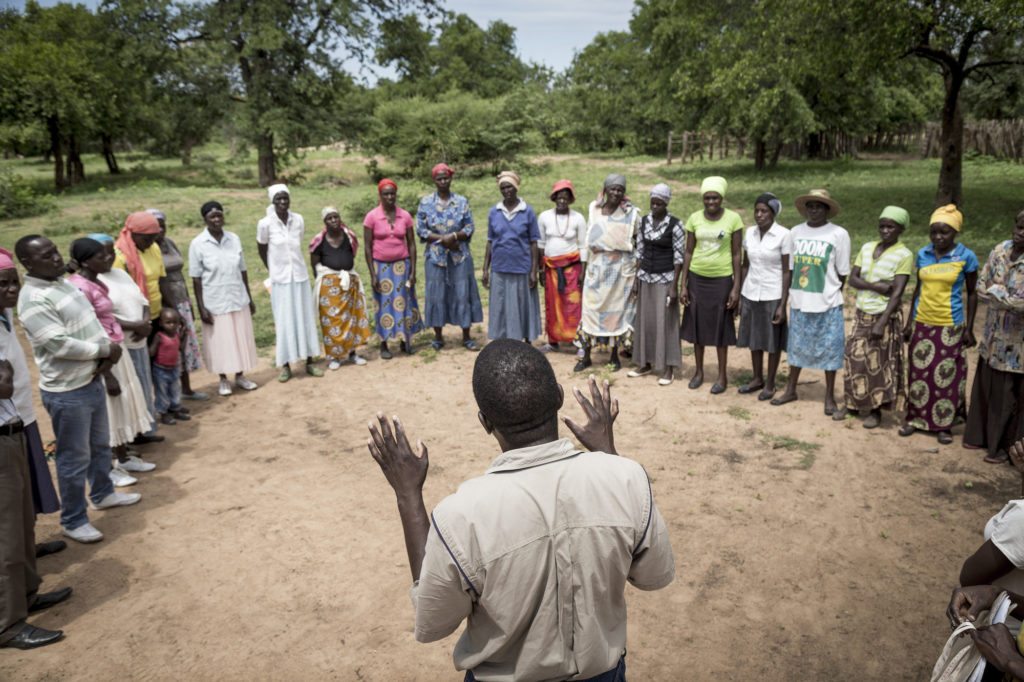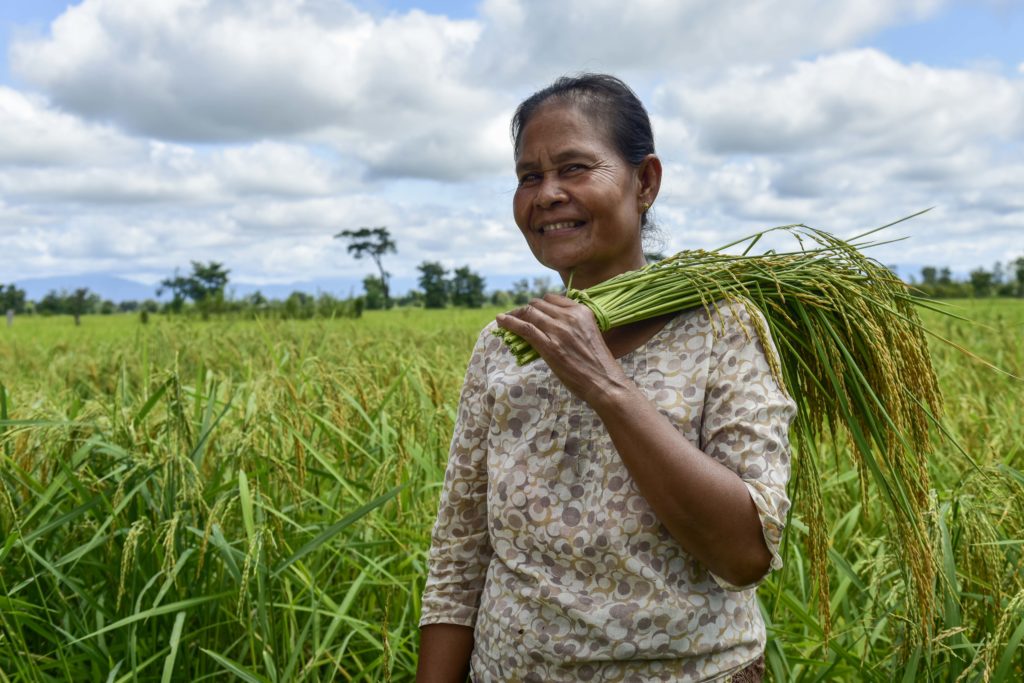By Bernard Muradya Oxfam Southern Africa MEAL Officer
Yield improvement
The Seed Production and Marketing component of the SD=HS project in Zimbabwe employed the Farmer Field School model in proving technical capacity to seed growers in the four targeted districts. During the 2021-2022 farming season, a total of 15 Farmer Field Schools (FFSs) adopted seed production and marketing. They are spread in the following disctricts: 8 in Uzumba Maramba Pfungwe, 2 in Murehwa, 2 in Mutoko and 3 in Mudzi, they focused on 3 main crops, namely sorghum, cowpeas, and groundnuts.
The FFSs were learning hubs where farmers learned practical knowledge and best practices on seed production and marketing which they adopted and replicated in their individual fields. Farmers in FFSs produced a total of 8,582 kgs of sorghum seed, they went on to produce a total of 59,130 kgs in their farms. All FFSs together produced 2,159 kgs of cowpeas and 14,405 kgs were produced by the same farmers in their own fields. The figure below shows total quantities of seed produced by farmers in the FFSs as groups and total quantity of seed produced with the same farmers in their individual farms.
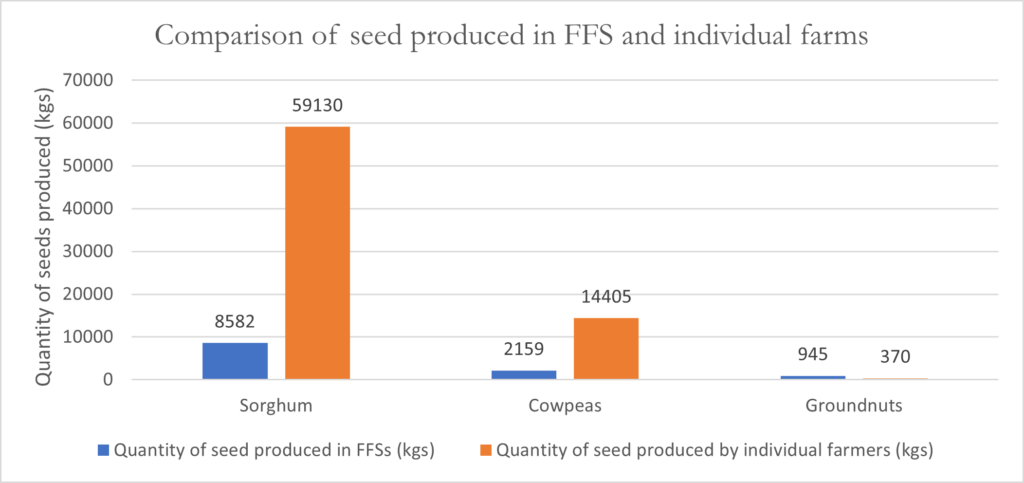
Farmers in farmer field schools influence other smallholder farmers
The FFS model used by the SD=HS project is spreading agronomic information and technical expertise to other farmers that do not take part in FFSs in the targeted districts. In total, 386 seed growers adopted seed production and marketing approaches, with 55 of the participants identifying themselves as youths. Through the 15 FFSs, the seed production and marketing efforts reached a total of 1,733 farmers who were not involved in the FFS. They gained seed production knowledge through several initiatives, including field days.
In Mudzi district, 47 farmers in FFSs reached 660 smallholder farmers. In Murehwa district, 45 FFS members reached 225 non-members. While in Uzumba Maramba Pfungwe district 616 non-FFS members were reached by 247 FFS members as shown in the figure below.
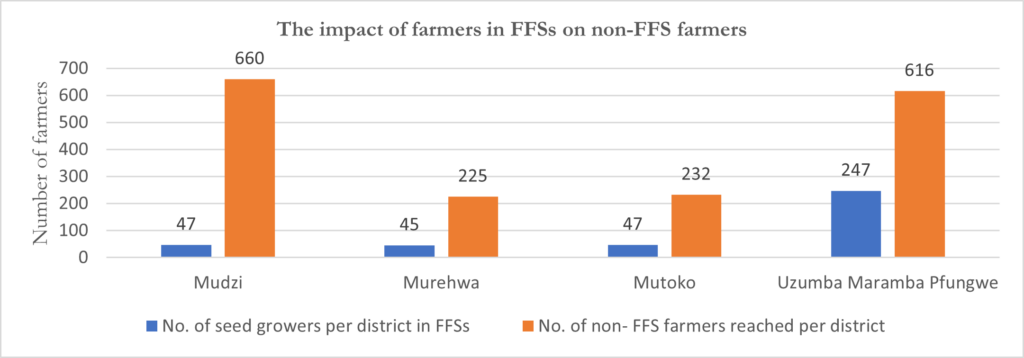
How seed production and marketing contribute to livelihoods diversification
Seed production and marketing in Zimbabwe has increased livelihood options for smallholder farmers in the four targeted districts. In Mudzi district seed production contributes more than 75% of smallholder farmers’ income for one third of FFS members. Whilst in Mutoko district, seed production contributes between 55 to 75% of all smallholder farmers’ income and in Murehwa district it contributes between 20-35% of farmers’ income for half of the FFS members. These statistics substantiate the notion that seed production and marketing is contributing towards livelihoods diversification for smallholder farmers in the targeted districts.
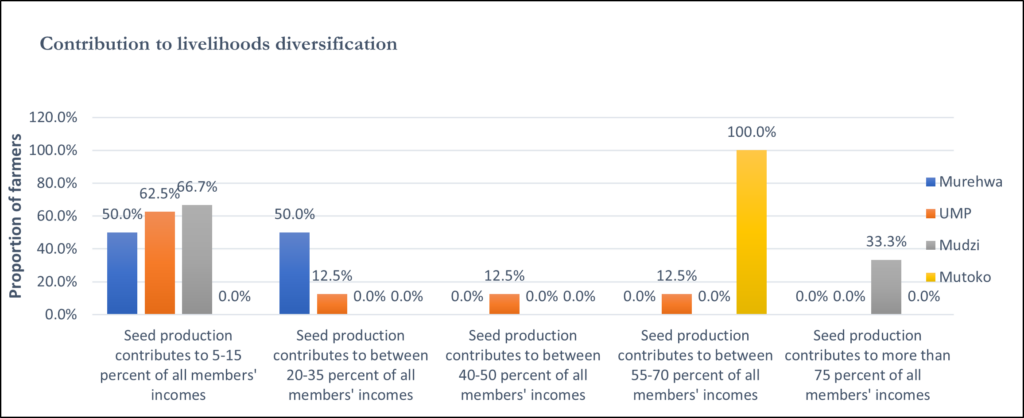
You can reach Bernard Muradya Oxfam Southern Africa MEAL Officer

